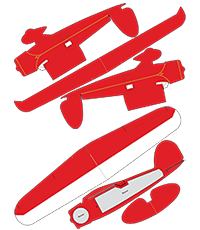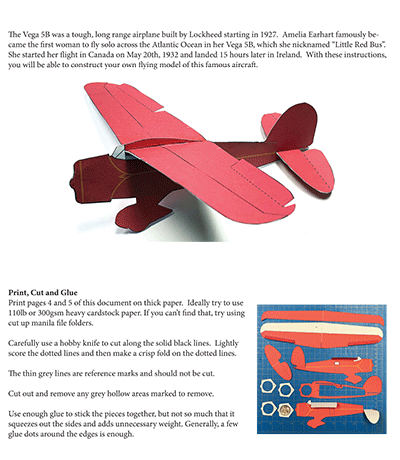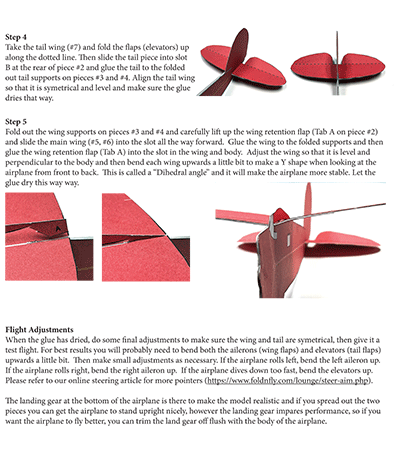Amelia Earhart's Lockheed Vega 5B
Build a flying paper replica of Amelia Earhart's famous Vega 5B airplane. Earhart remains one of the most iconic figures in the history of aviation, celebrated for her pioneering achievements as a female pilot.
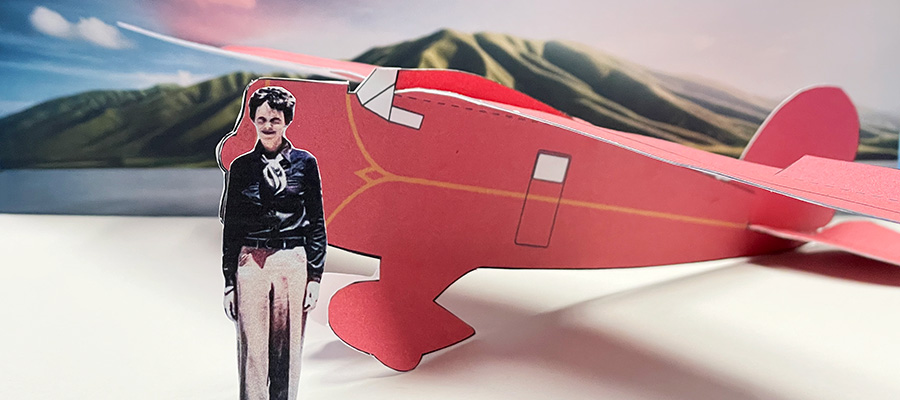
In this papercraft diorama you can see Amelia Earhart standing in front of her Lockheed Vega 5B airplane that she famously piloted across the Atlantic in 1932, becoming the first women to accomplish the feat.
Keep reading to learn how to build your own flying paper model of the Vega 5B. This is an advanced model that will require you to cut out different pieces and glue them together. When you are done, you will have a realistic Vega 5B that really files (only, maybe not across the Atlantic). Full instructions are included in the downloadable templates linked below. Print at home and build it yourself!
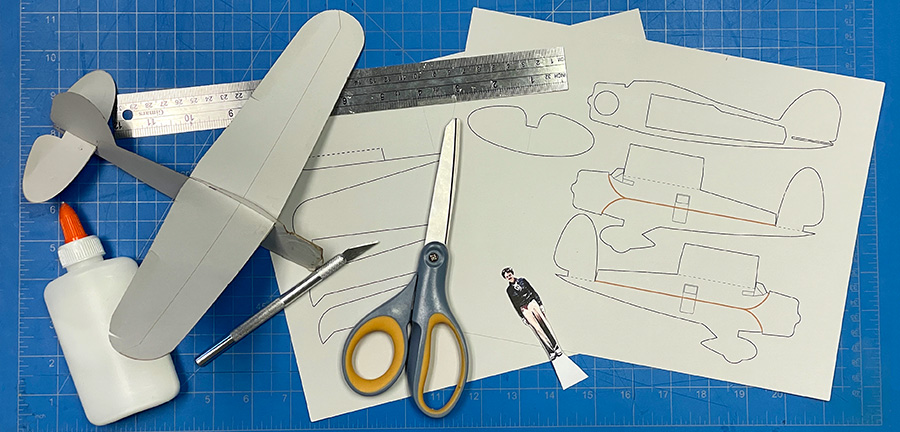
Amelia Earhart
Amelia Mary Earhart was born in Kansas on July 24, 1897. From a young age, she exhibited a spirit of adventure and independence that defied the conventional expectations of women during the early 20th century. Her first encounter with an aircraft at a state fair did not initially inspire her. It wasn't until she experienced her first flight as a passenger in 1920 that she felt a compelling urge to fly. Driven by this newfound passion, Earhart worked a variety of jobs, from photographer to truck driver, to save enough money for flying lessons. She quickly excelled in aviation and got her pilot's license in 1923.

Earhart's aviation feats became increasingly notable when, in 1928, she became the first woman to fly across the Atlantic Ocean, albeit as a passenger. This transatlantic flight catapulted her to international fame, earning her the nickname "Lady Lindy," in reference to the renowned aviator Charles Lindbergh. She capitalized on her fame to promote aviation and women's rights, becoming a public speaker, author, and advocate for the aviation industry. She continued to break records, including becoming the first woman to fly across the North American continent.
In 1932, Earhart's ambitions and skills were on full display when she became the first woman to fly solo across the Atlantic Ocean. This monumental achievement not only mirrored Lindbergh's solo flight but also established her as an international hero. She received numerous honors, including the Distinguished Flying Cross from Congress - the first ever given to a woman. Throughout the following years, she continued to set speed and distance records (for example, flying solo from Hawaii to California, the first for any pilot), becoming a living symbol of courage and determination.
Tragically, Amelia Earhart's storied career came to an abrupt and mysterious end during her attempt to circumnavigate the globe in 1937. Flying a Lockheed Electra 10E, she and navigator Fred Noonan disappeared over the central Pacific Ocean. Despite extensive search efforts, neither the pilots nor the plane were ever found. Earhart's disappearance remains one of the greatest unsolved mysteries of the 20th century. She is remembered not only for her groundbreaking achievements in aviation but also for her enduring impact on the fight for gender equality and her inspirational role as a pioneer for women in a field dominated by men.
Lockheed Vega 5G Airplane
The Lockheed Vega is a series of high-wing monoplanes, constructed by the Lockheed Corporation starting in 1927. It could carry between five to seven people and was notable for its impressive speed and long range.
John Knudsen Northrop and Gerald Vultee designed the Vega for Lockheed before heading off to start their own aircraft companies. It was intended for use in Lockheed's airline routes, but also become popular with famous pilots like Amelia Earhart and Wiley Post.
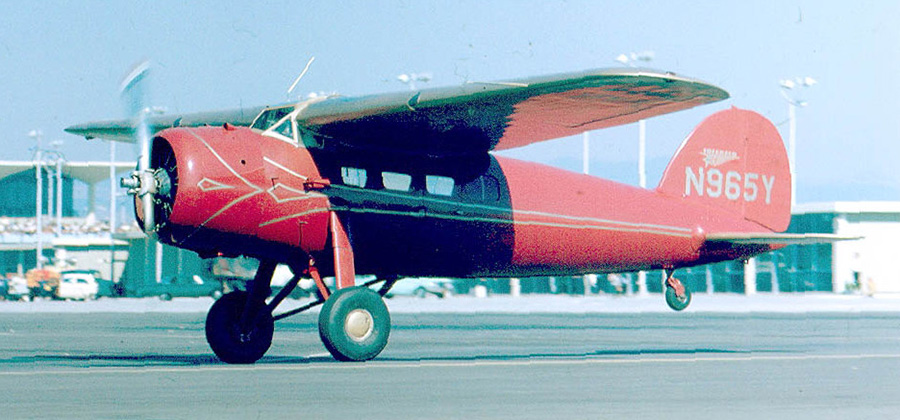
The Vega's body was made by layering plywood over wooden frames and using a large concrete mold for shaping. Each half of the fuselage was made by gluing layers of plywood together and then compressing them in the mold. This unique structure eliminated the need for internal supports. The one-piece wing was internally supported, which allowed the wings to be mounted on top of the aircraft without interfering with the fuselage structure. The Vega was powered by a Wright Whirlwind air-cooled radial engine, producing 225 horsepower.
The Vega 1 took off from Lockheed's Los Angeles facility on July 4, 1927. It was capable of speeds up to 135 mph, and by the end of the next year, 68 of these planes had been made. At the 1929 National Air Races in Cleveland, Ohio, the Vegas won all the speed categories. Many early flying records were set in a Vega aircraft.
Lockheed introduced the improved Vega 5 in 1929. This model featured a more powerful Pratt & Whitney engine and improved aerodynamics, allowing for additional passengers and higher speeds. The Vega 5 was also popular among private and commercial airlines. It was upgraded twice to 5B and 5C which allowed for higher weight operations.
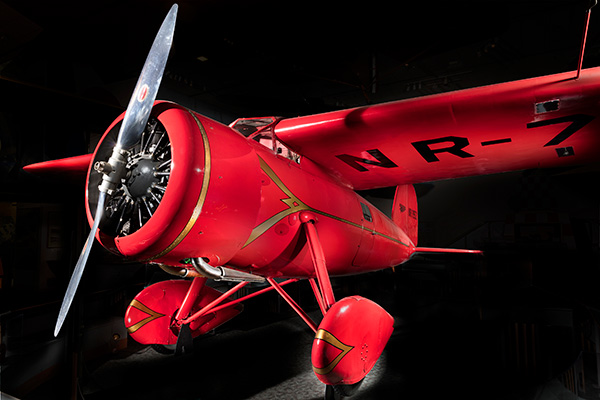
Amelia Earhart bought her 5B Vega plane in 1930, which she called her "Little Red Bus." After an accident that year, she had it fixed up and made stronger so it could hold more fuel. She added three different compasses, a tool to measure drift, and a stronger engine.
In 1931, the United States Army Air Corps acquired two special Vegas for their use. These were based off the Vega 5C, but were made with metal bodies and extra fuel tanks.
Despite its achievements, the Vega had its challenges. Elinor Smith, a pilot, noted its poor gliding ability, and Lane Wallace, a journalist, pointed out the limited visibility from the cockpit, especially during takeoff and landing.
Earhart sold her 5B Vega to the Franklin Institute in Philadelphia in 1933 when she got a new Lockheed 5C Vega. In 1966, the Smithsonian got the plane, and now you can see it at the National Air and Space Museum in Washington DC.
Build Your Own Vega 5B

Now you can make your own flying Vega 5B airplane. We have designed and prepared a set of templates and instructions that will walk you through the entire build. This activity is a little more complicated than the standard folded paper airplane, but with a little patience and effort you will be rewarded with a nice model to display and fly. The included instructions and step by step pictures will walk you through the assembly process. You will do the following things:
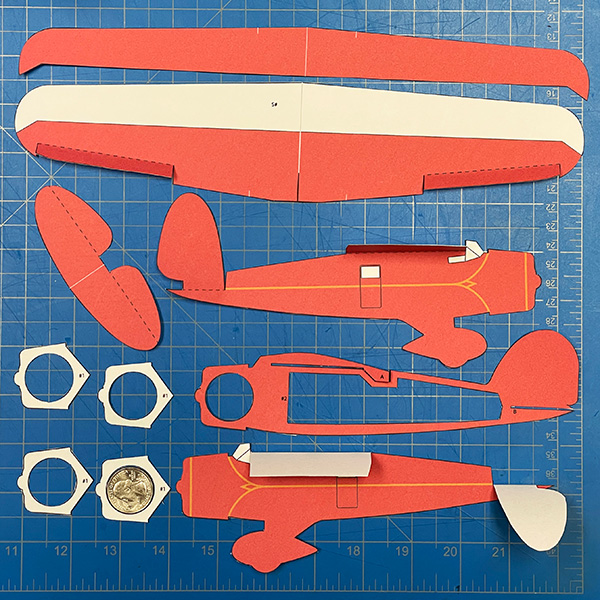
- Print the included templates on thick paper. Preferably 110lb or 300gsm heavy cardstock paper. For more information on paper weight, please read our article on Paper Thickness.
- Carefully use a hobby knife or scissors to cut along the solid black lines.
- Fold on the dotted lines.
- Glue the 10 pieces together according to the step by step instructions.
- Sandwich a coin in the nose of the airplane for good weight balance.
- Adjust the Ailerons and Elevators for optimal flight.
- Fly it and have fun!
We have spent a lot of time designing this flying aircraft model and we think that you will really enjoy it. The downloadable templates and instructions are a benefit reserved for our cherished members. If you have your Fold 'N Fly Pilot's License, please use the download button below to grab your copy and get started! If you don't have your license yet, it's a small one-time fee for unlimited access to all of our premium content. Please consider supporting us so we can continue to make more exciting paper airplanes like this.
Amelia Earhart's Records
| Amelia Earhart's Records | |
|---|---|
| 1922 | Earhart flew her yellow Kinner Airster biplane to an altitude of 14,000 feet, the highest flight for a woman at the time. |
| 1928 | Earhart became the first woman to fly across the Atlantic Ocean (as a passenger). |
| 1931 | She set a speed record for flying 180 mph. |
| 1931 | First woman to fly an auto-gyro (similar to a helicopter), first woman to fly it across the United States and an altitude record for flying an auto-gyro (18,415 ft). |
| 1932 | On May 20-21, Earhart flew her Vega 5B alone across the Atlantic Ocean without stopping. She was the first woman to do this and the second person after Charles Lindbergh. She started in Newfoundland, Canada, and flew for 15 hours, covering 2,026 miles, until she landed in Northern Ireland. This amazing flight made her famous all over the world and showed she was a brave and skilled pilot. This flight also made her the first person to fly across the Atlantic twice. |
| 1932 | The first woman to receive the Distinguished Flying Cross award. She received this for her transatlantic flight |
| 1932 | The first woman to fly non-stop across the United States. |
| 1933 | She broke her own speed record for flying across the United States (17hr 7min 30sec). |
| 1935 | On Jan 11, Earhart became the first person to fly solo from Honolulu Hawaii to Oakland California. The flight took 18 hours and covered 2,400 miles. |
| 1935 | The first solo flight from Los Angeles to Mexico City. |
| 1935 | The first solo flight from Mexico City to Newark, New Jersey. |
| 1937 | She set a speed record for flying from Oakland California to Honolulu Hawaii on March 17. The time was 15 hours and 47 minutes. |
| 1937 | Earhart made the first solo flight from the Red Sea to Karachi. |
| 1937 | Ill fated attempt to circumnavigate the world. Because of its equatorial route, it would have been the longest flight around the word at the time. |
Happy Flying
This papercraft diorama not only pays homage to Amelia Earhart's trailblazing achievements in aviation but also offers a creative and engaging way to explore her legacy. By building your own paper model of the Lockheed Vega 5B, you can gain a deeper appreciation for Earhart's historic flight across the Atlantic and her remarkable contributions to both aviation and women's rights. Whether you're a fan of aviation, history, or papercraft, this project invites you to experience a piece of the past in a tangible and memorable way.
